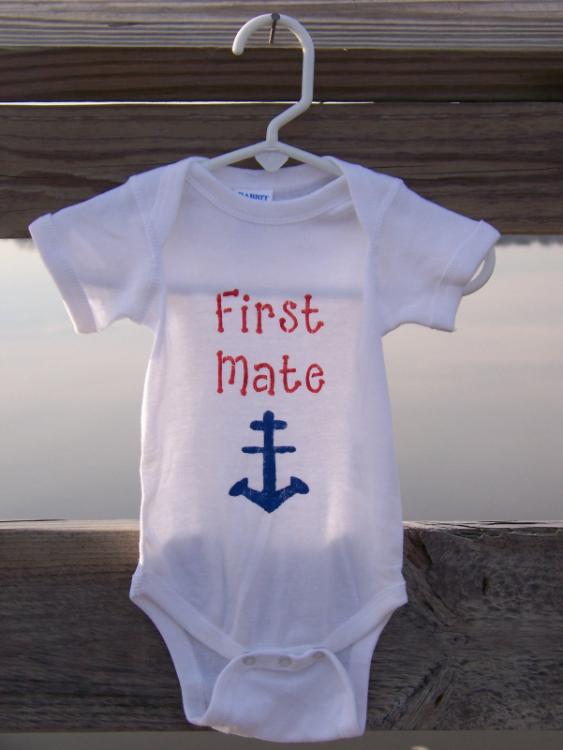Planning for Smooth Sailing with your Infant
by Sarah Harvey
SpinSheet contributors have shared some good tips for sailing with your kids: start early, make it fun, provision ahead of time, and be flexible with the weather. As a new mother and avid sailor, I definitely wanted to get a jump start on family sailing. I latched onto phrases such as, “The earlier you start sailing as a family, the easier it is.” But I found making the leap was harder than expected. I had so many questions about sailing with an infant: What is the smallest lifejacket size? Can babies use sunscreen? Where will she sleep? What about those smelly diapers? I felt overwhelmed, and the tips related to sailing with an infant, scattered throughout magazines, blogs, and forums, were blurring in my mind. I was teetering on the edge with only two hours of sleep. My plans were stalling before I even began. A year later, I’m proud to say that we did. Sailing as a family was an amazing experience filled with priceless memories. Even though she was only a few months old, our daughter loved being on the water and feeling the wind against her face. With each gust, that little tongue would pop right out. It was as if she were tasting the wind. It must have tasted good, because those tastes were followed by a grin and a giggle. Are the logistics of sailing with an infant keeping your family on shore? If so, I hope the following tips will help your family cast off.

1. Physical Safety
Avoiding drowning is, of course, a big concern. A lifejacket is an obvious answer, but I’d never seen an infant lifejacket. Fortunately, U.S. Coast Guard-approved infant lifejackets are readily available and while bulky, wearable. That said, keeping the baby safely in the boat (and out of the Bay) was key. It was important to determine where a small baby would sit and how we could avoid dropping her. We found that a front baby carrier provided us the ability to safely go hands-free, which was essential in choppy waters. When she wasn’t being carried, a car seat or bouncer tightly lashed to the base of mast down below or secured in the cockpit provided her a place to sit.
2. Health Issues
It’s very important to prevent sunburns in infants, but children’s sunscreen labels indicate they are for infants six months and older. So, what can you do to protect your newborn while on the water? A UV sunshade, sun-protective clothing, a wide-brimmed hat, and quality baby sunglasses will help protect babies’ skin and eyes. We found that a hat with a head strap will actually stay on. Since some sun exposure is unavoidable while sailing, you may also want to use a non-chemical sunscreen. Infants are unable to regulate their body temperature effectively. To help, open cabin windows and use small, battery-operated fans to keep the air moving down below. Breathable fabrics also provide ventilation while keeping babies’ skin covered. Lastly, keep a small tub and cool water on hand. If the baby seems to overheat, a cool bath can reduce body temperature.
3. Sleeping
A car seat, bouncer, or infant hammock (rigged with a sideways preventer) can provide the baby a place to comfortably sleep while underway. For overnights, we’ve also seen families use a portable baby bed that rests between the parents or a Pack n’ Play. However, our daughter would never sleep in those types of baby beds, so we favored cordoning off the V-berth with netting and following safe co-sleeping recommendations, such as those as outlined in Sleeping with Your Baby: A Parent’s Guide to Cosleeping and other books.
4. Diapers
Believe it or not, a well-ventilated cabin and using double plastic bags or a roll-top waterproof bag kept those stinky odors at bay. For changing diapers, a foldable, contoured changing pad worked wonders for keeping the baby in place and messes off of the settee.
5. Emergencies
Perhaps one of my biggest concerns was how to handle both the boat and the baby in an emergency. Our answer was to be prepared to single-hand (lines run aft, tiller lock/ autopilot, prepped for easy reefing and sail drops); to have a safe spot for the baby (easily accessible car seat securely in the cabin); and to have a sailing competent friend along with us (to fully handle the boat if both parents needed to focus on the baby).




